46: The Birth of Porsche Motorsport
ISNB 978-1-956309-01-0
Publication date: February 2023
Page size: 290mm by 254 portrait Hardbound
500 Images, 336 pages
$150 USD
Review by Pete Vack
In May of this year, the subject of this excellent single chassis history, Porsche 356/2 SL 063 will return to Germany for the first time in over 70 years, having spent most of its life being raced and restored in the U.S.
After being displayed at the Porsche Museum, 063 will travel to Le Mans in June for the very special 100-year anniversary of the 24-hour race, for it has been determined that this particular Porsche was the car that won its class at Le Mans in 1951, wearing the number 46, hence the title of the book. Billed as the car that gave birth to Porsche Motorsport, it has a legitimate stake, a great history, and has finally been given its due.
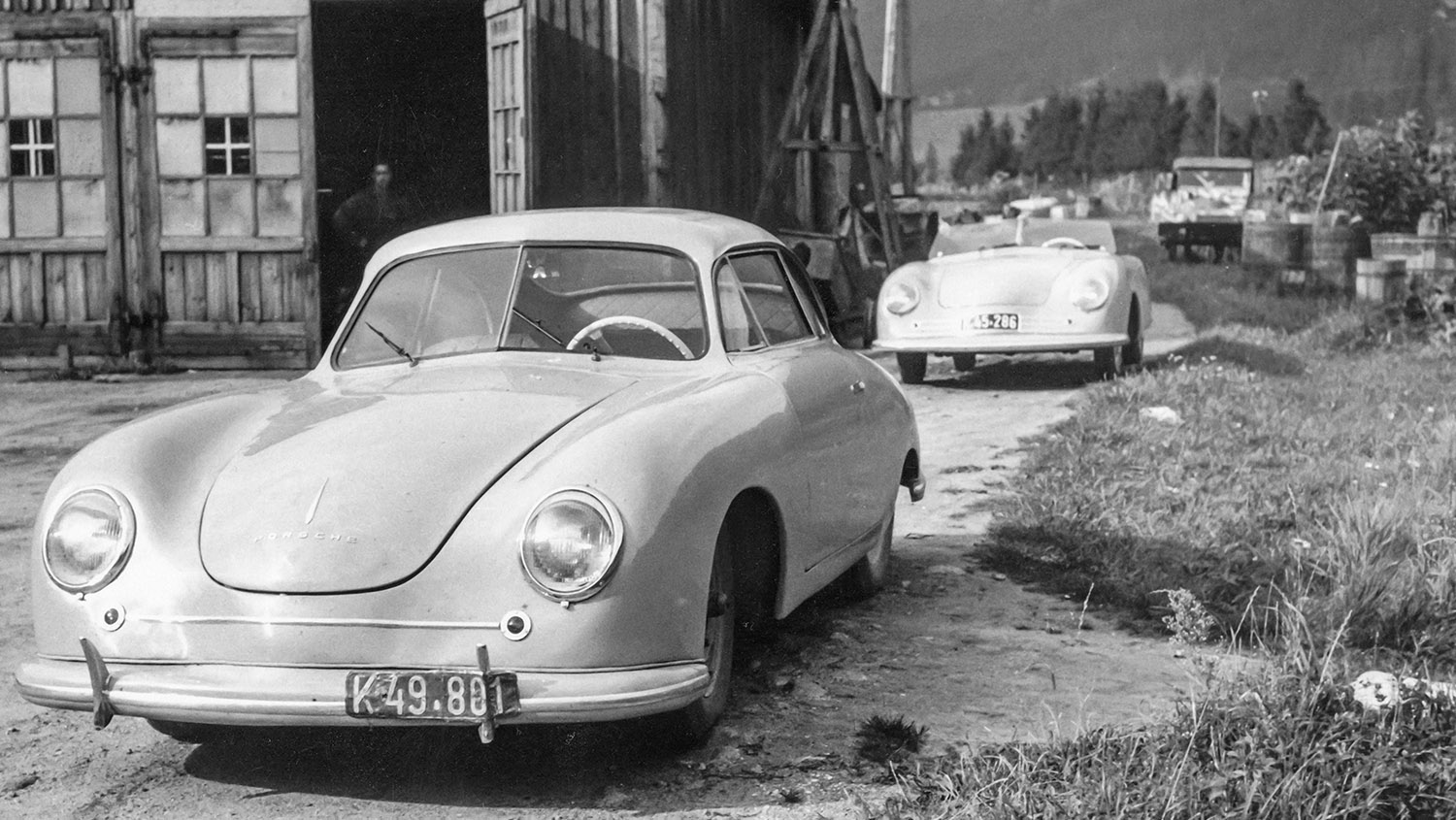
Porsche 356/2 Coupé in Gmünd, Kärnten with 356 001 in background. Porsche moved operations to Austria during the war and built the first few Porsches at this location. By 1948 the process of moving back to Stuttgart in Germany had begun.
Single serial number books can be a bit of a bore, very thin, or both. 46: The Birth of Porsche Motorsport is neither, as it comprehensively sets the historical stage and continues on through the detailed restoration of chassis 356/3 SL 063 right to the crowning moment at Pebble Beach in 2016. Unusually, this book employs six authors with particular specialties and the combination works well; Randy Leffingwell on the history of Porsche, Doug Nye on the Liege-Rome-Liege, a sparkling chapter on Johnny von Neumann by eyewitness William Edgar, Sean Cridland bios Max Hoffman, Gary Horstkorta writes up the Chuck Forge vintage racing era, and finally a blow-by-blow of discovery and restoration by Rod Emory. It is a potent combination that never fails to fascinate. And the one person is left to tell the tale…Herbert Linge, who was a mechanic for Porsche at the time, is interviewed and provides interesting background details of the epic Le Mans race.
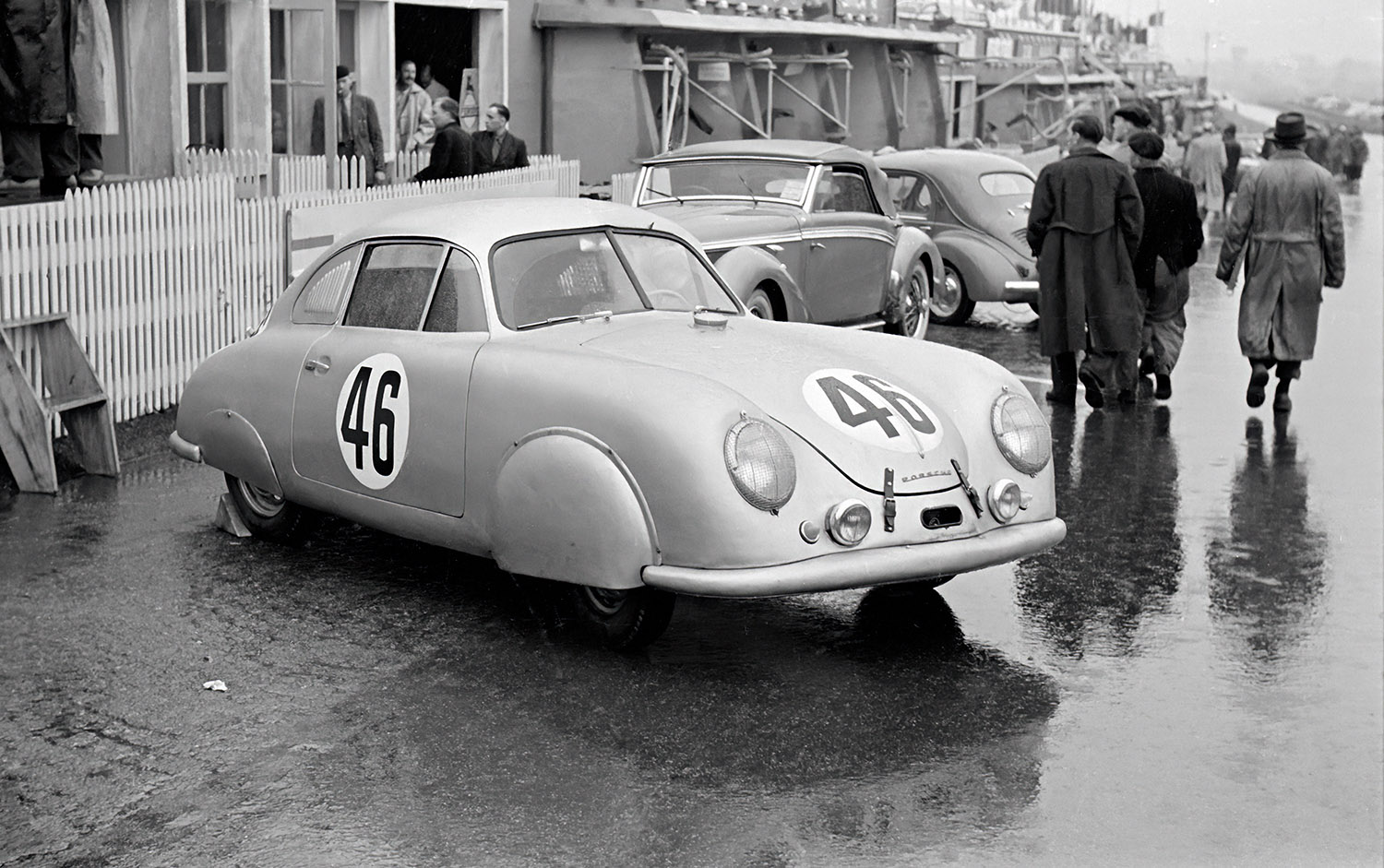
On the verge of success. 063 sit on the pit lane at Le Mans before its class win that would change the world of Porsche.
It is, of course, that very first class win at Le Mans in 1951 that makes 063 so vitally important. Porsche’s first factor- backed competition event is thoroughly documented, right down to the parts each car had onboard and the map they used to drive from Stuttgart to Le Mans. Entering, and winning its class at Le Mans was no mean achievement. Only one car, 063, driven by Auguste Veuillet and Edmond Mouche actually made the grid, though a total of four cars were prepared for the two-car entry. We might add here that the same team of Veuillet and Mouche again won the 1100cc class at Le Mans with a 356 SL in 1952–a significant achievement often overlooked.
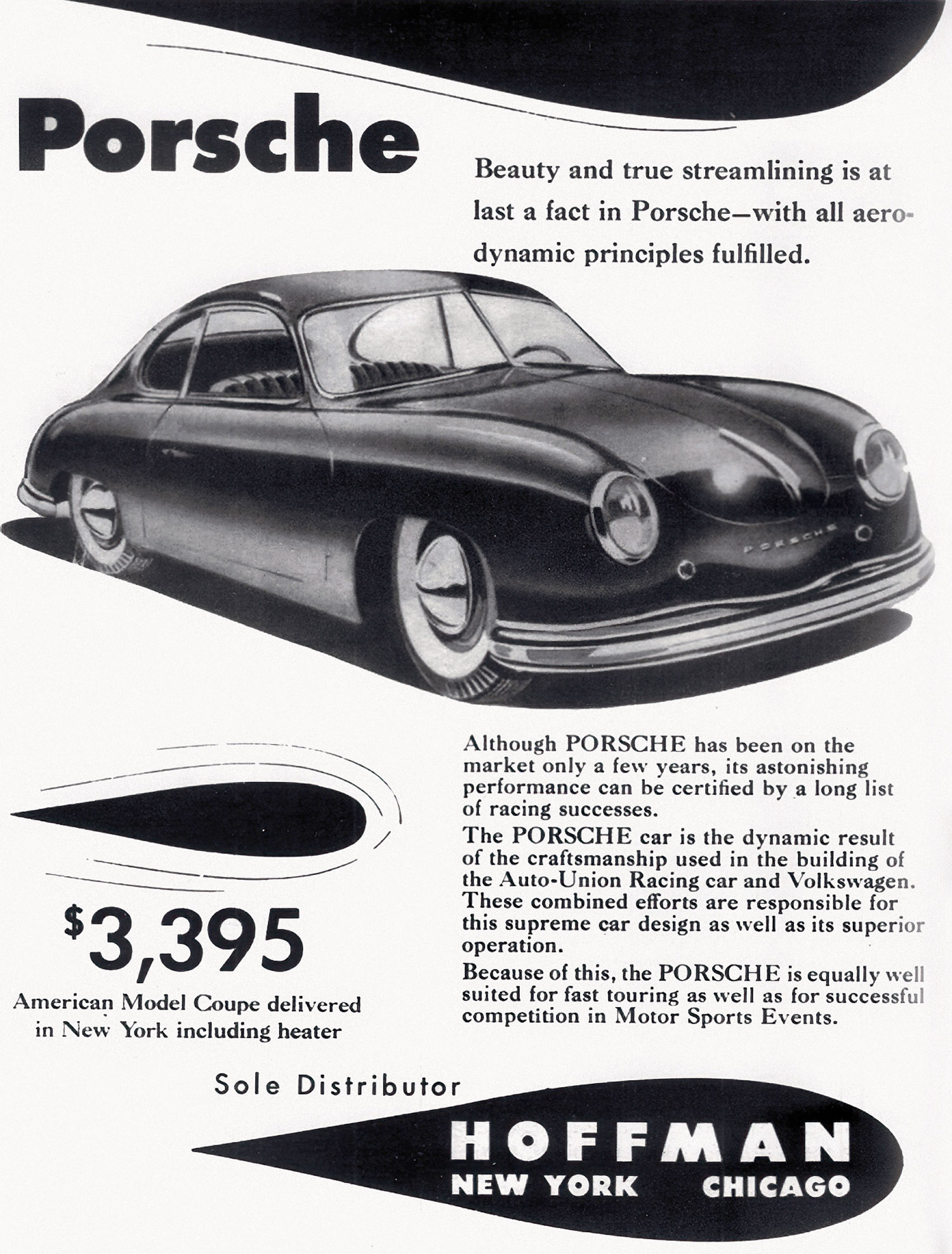
A typical ad from Hoffman. Note that the tiny Porsche was more expensive than a Cadillac but did come with a heater.
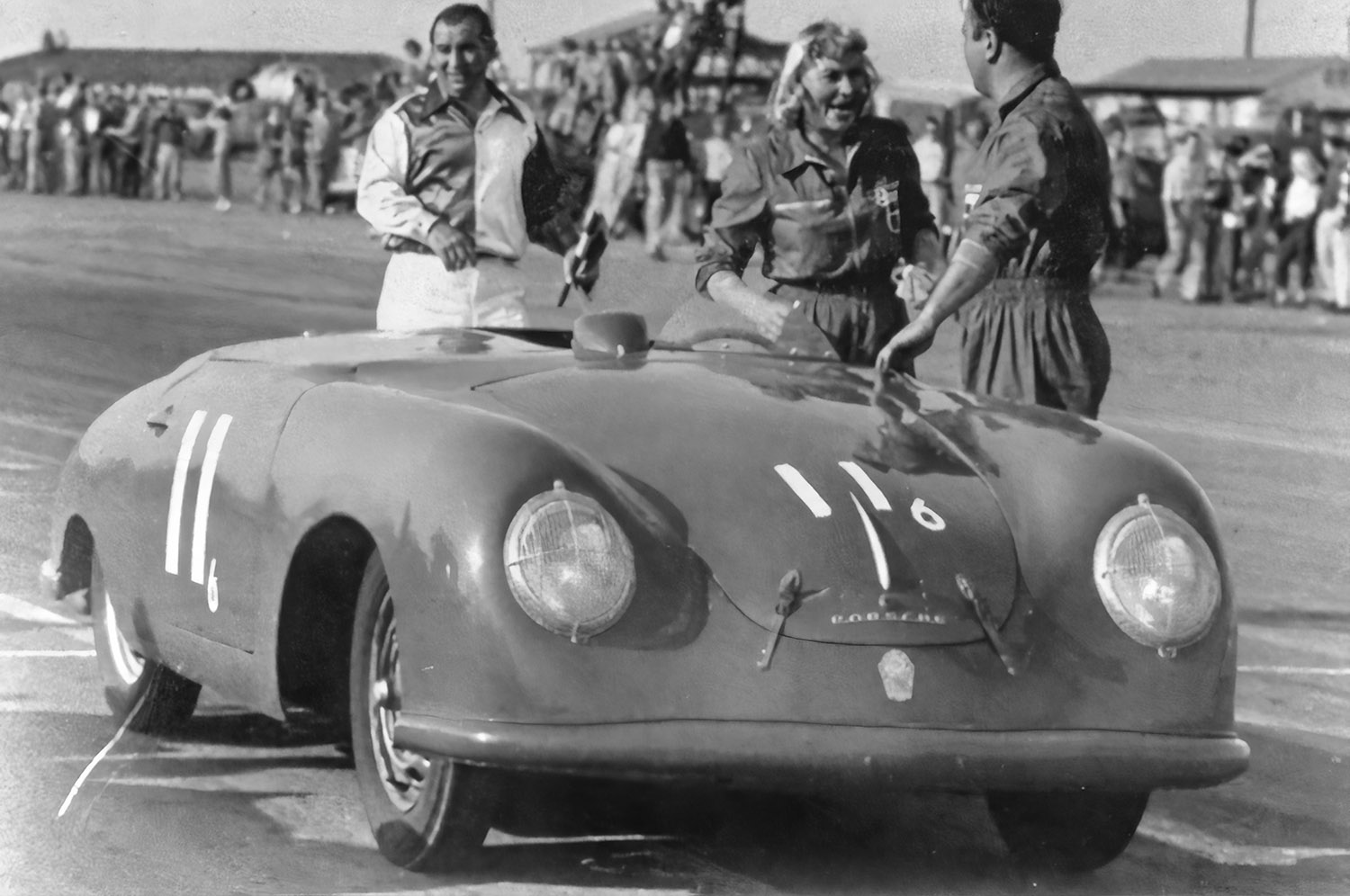
Johnny and Eleanor von Neumann after the 1952 Torrey Pines race. The open version was very successful for von Neumann.
But after a successful run on the Liege-Rome-Liege rally, the history of 063 is an American story, starting with Max Hoffman’s meeting with Ferdinand Porsche at the Paris Salon in 1950, continuing on with the purchase of SL 063 by John von Neumann, who successfully raced 063 as both a coupe and then a roadster in California events through 1952. Von Neumann sold 063 to Bill Whittington who sold it to Rick Gale who then it passed to Ernie Spitzer.
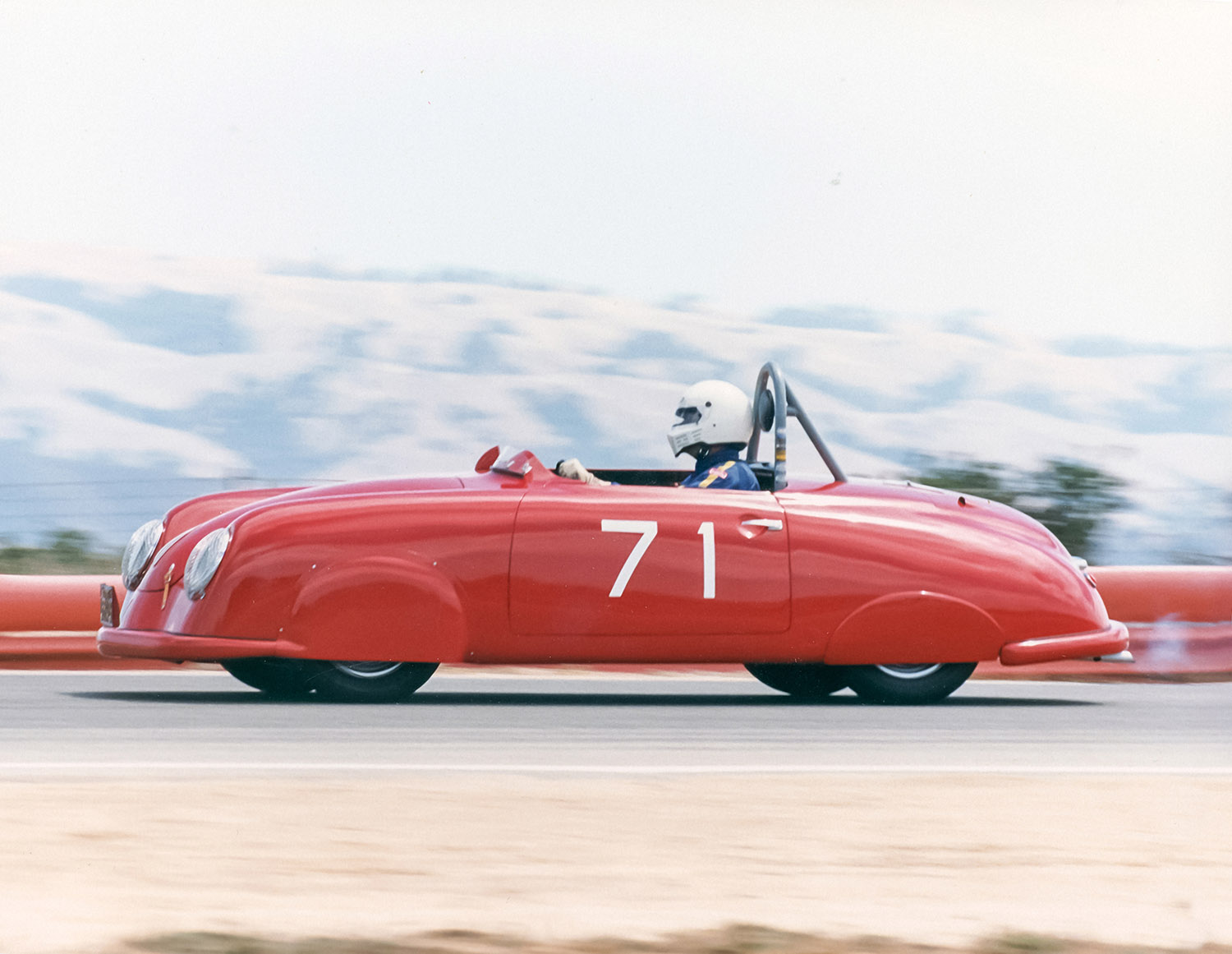
Chuck Forge owned the von Neumann modified 063 for over 50 years during which time he restored it and vintage raced it right up to his untimely death in 2006. Here seen at the 1987 Monterey Historics.
By then it was just an old race car, and next sat on Dick Cottrell’s used car lot until found by Chuck Forge in 1957. Forge (worthy of a chapter himself) kept 063 for the next 52 years, always believing it was the Le Mans winner. After Forge died in 2006 it was purchased by Cameron Healy, who gambled that Forge’s assumptions were correct and launched a long-term restoration. The discovery, forensic investigation and subsequent restoration by Rod Emory is covered in detail and we get a good idea of the latest digital scanning techniques that were used to replace the top, removed by von Neumann to make the aging Porsche more competitive.
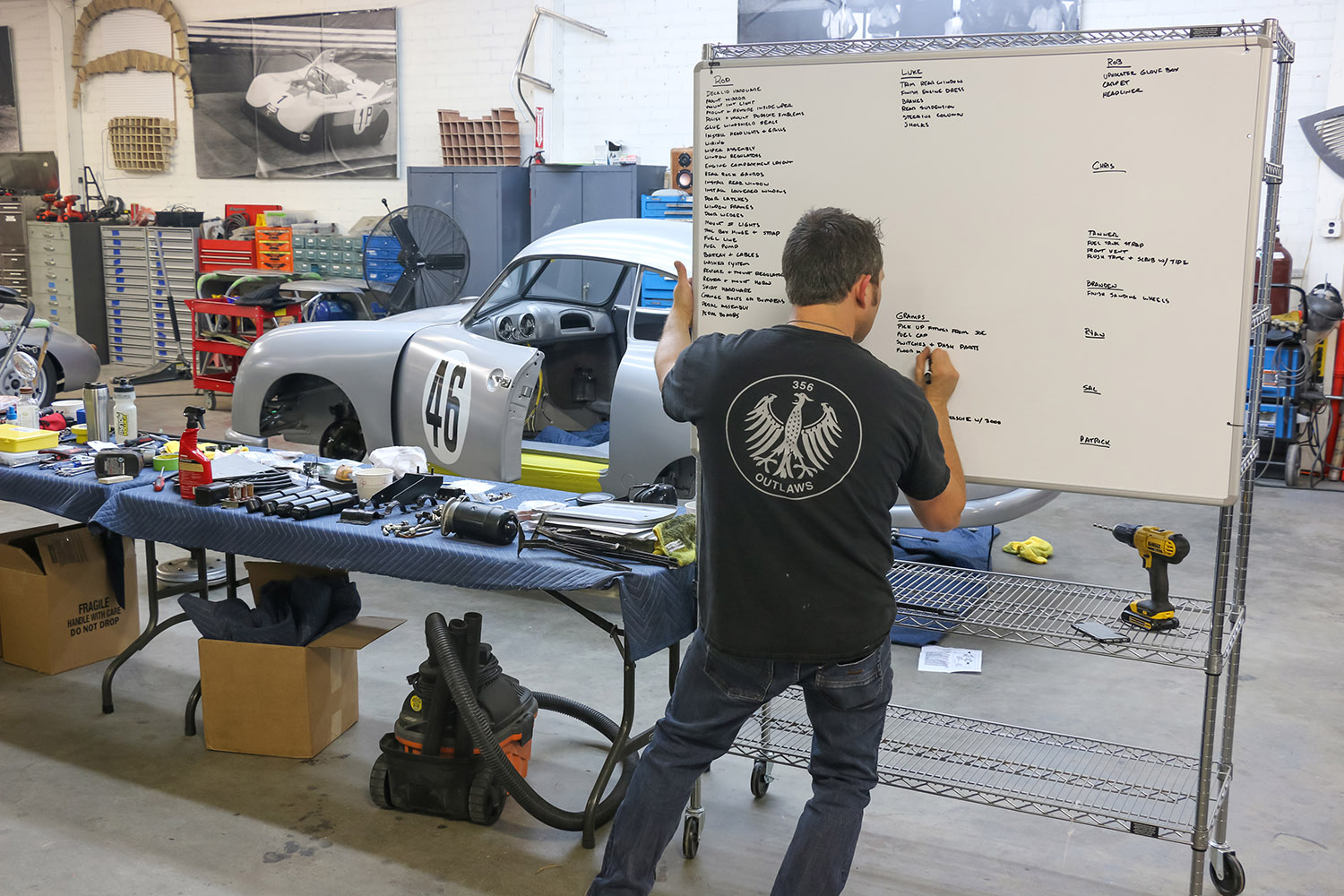
Rod Emory’s shop was in charge of the restoration of 063. Here he is at the old timey white board listing the objectives for the next day’s scope of work.
Throughout the book there are an amazing amount of documentation pertaining to the car and the times, from the complete Le Mans factory papers to letters of the disagreements between Hoffman and von Neumann over dealership and distributor rights. Many of the documents are from the Porsche factory, and scanned, still in German. An appendix translates all the non-English documents into English, the first time we’ve ever noted such a nicety.
Appendices also include a bibliography, photo credits (500 images), acknowledgements and brief sketches of the book’s contributors. Another nice touch is a complete chapter with superb photography of the Pebble Beach-ready Porsche, done in a studio by “Ted7”. The car is completely detailed right down to the tool kit.
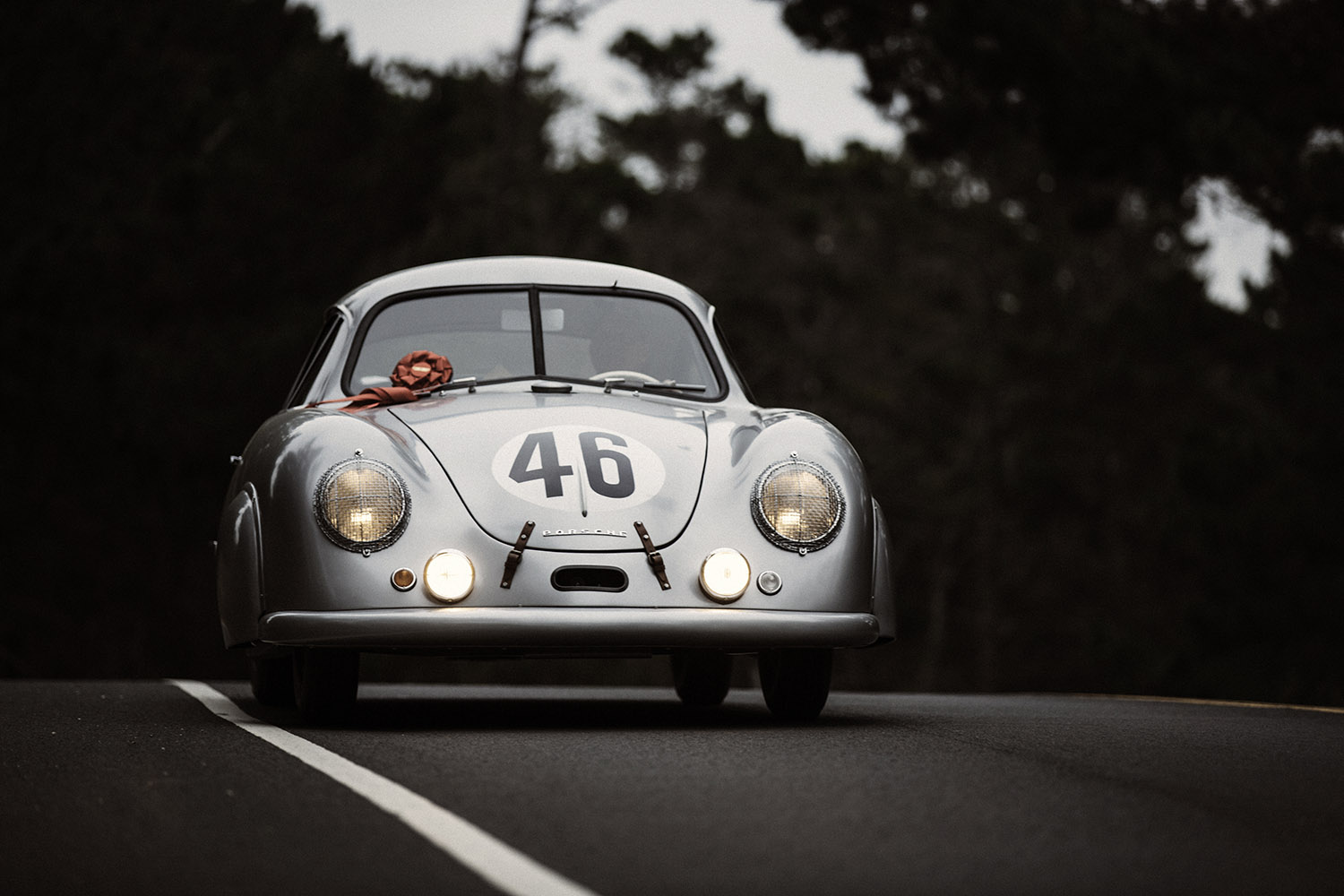
Objective met: total restoration to the 1951 Le Mans specs and a ribbon at Pebble Beach. Emory describes what it was like to take the Porsche up the ramp at Pebble Beach.
Complete Indices and Appendices are always a welcome part of any Dalton Watson book, much appreciated by historians, reviewers and others who demand answers quickly. We get spoiled and wish all publishers would extend the same courtesy.
On a final note, Dalton Watson Fine Books has a 250 copy, Publisher’s Edition in the works. It is signed by Cameron Healy (car owner) and Rod Emory, whose team restored SL 063 to its 1951 Le Mans configuration. Also included is a 20-page supplement of additional Ted7 studio images and a digital signature/photo of Herbert Linge. Mr. Linge is the last surviving mechanic involved in the building of the car in 1951. The entire package is held in a slipcase and is only available from Dalton Watson Fine Books.

